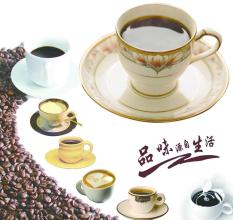Flavor description of Honduran Coffee beans introduction of Grinding Calibration method in Manor production area
Flavor description of Honduran Coffee beans introduction of Grinding Calibration method in Manor production area
The granules of coffee beans in Honduras are large in shape, uniform in size and glossy in color. In order to facilitate harvesting, farmers will prune the coffee trees to no more than 150 centimeters, because if they grow too high, they have to set up ladders to pick, which is not only time-consuming, but also may damage the trees by bending branches. As the ripening period of each fruit of coffee beans is different, in order to maintain the good quality of coffee beans, it is necessary to pick them manually, and then select the ripe fruits. For coffee fruits of the same branch, it often takes several weeks to pick them all.
High-quality coffee in Honduras uses water washing to deal with coffee beans, usually after soaking, when the defective fruit will surface, it can be discarded first. Then put the good fruit into the fruit peeling machine and peel off the peel with the rotating force of the machine. Peeled fruits are screened by machines to select fruits of high quality. Usually the bigger the fruit, the better the maturity. Coffee in Honduras is dried in the sun, so there is always a hint of fruity in the taste.
Honduran coffee has a rich and mellow taste, taste is not astringent, not sour, mellow and aroma are very high, quite personality. Honduran coffee can lead to multiple levels of flavor depending on the degree of roasting. Moderate baking can maximize the sweetness of beans, while deep baking increases bitterness, but sweetness does not disappear. Generally speaking, medium roasting has the best taste and has a rich and unique aroma. Honduras's high-quality coffee is favored by coffee lovers in Honduras. High-quality coffee in Honduras uses a washing method to deal with coffee beans, usually after soaking. Defective fruit will surface and can be discarded first. Then put the good fruit into the fruit peeling machine and peel off the peel with the rotating force of the machine. Peeled fruits are screened by machines to select fruits of high quality. Usually the bigger the fruit, the better the maturity. Coffee in Honduras is dried in the sun, so there is always a hint of fruit in the taste. The granules of Honduran coffee beans are large, uniform in size and uniform in color. In order to facilitate harvesting, farmers will prune the coffee trees to no more than 150 centimeters, because if they grow too high, they have to set up ladders to pick, which is not only time-consuming, but also may damage the trees by bending branches. As the ripening period of each fruit of coffee beans is different, in order to maintain the good quality of coffee beans, it is necessary to pick them manually, and then select the ripe fruits. For coffee fruits of the same branch, it often takes several weeks to harvest them all. Honduras produces two kinds of coffee of very good quality, which are highly respected by coffee lovers. One is "Highland Coffee", which grows at an altitude of 1000 to 1500 meters, and the other is "selected Highland Coffee", which represents the highest level of Honduras, which grows at an altitude of 1500 to 2000 meters. Most of the Honduran coffee is exported to the United States and Germany: it has a good flavor, rich and mellow, and suitable for mixed drinking. Honduran coffee bean Honduras, the most obvious feeling is relatively soft and thick, occasionally feel a little sweet; low acidity, in Central American coffee producing areas, Honduran coffee is famous for black berry flavor and caramel sweet, medium mellow thickness, and even has black pepper and cut tobacco flavor in some batches of coffee

Important Notice :
前街咖啡 FrontStreet Coffee has moved to new addredd:
FrontStreet Coffee Address: 315,Donghua East Road,GuangZhou
Tel:020 38364473
- Prev

Description of the Flavor of Yejia Coffee Coffee beans introduction to the Grinding scale of varieties produced in the Manor
Description of the flavor of Yejia Coffee Coffee beans in the manor area the variety grinding scale introduced that the Yega Snow Coffee producing area began to try the water washing method in 1959. After 1970, the jasmine scent of Yega was washed, and the taste of lemon and citrus was popular in Europe and America. It has become a model of fine beans in Africa, and the sun treatment is gradually drifting away from Chevy. However, there are always people who will miss the wonderful wine in the sun without a trace.
- Next

Flavor characteristics of Yejia Coffee beans introduction to the grinding scale of taste treatment method in manor production area
The flavor characteristics of Yejia coffee beans the grinding scale of taste treatment in the manor area introduces the popularity of Yega, which is largely influenced by the trend of boutique coffee since the millennium. Its floral and fruity, citrus flavor sets a typical rebellious flavor. Under the popularity of Italian re-baking, the majority of consumers have never had a sour taste in their definition of coffee, let alone citrus or fruit.
Related
- Detailed explanation of Jadeite planting Land in Panamanian Jadeite Manor introduction to the grading system of Jadeite competitive bidding, Red bid, Green bid and Rose Summer
- Story of Coffee planting in Brenka region of Costa Rica Stonehenge Manor anaerobic heavy honey treatment of flavor mouth
- What's on the barrel of Blue Mountain Coffee beans?
- Can American coffee also pull flowers? How to use hot American style to pull out a good-looking pattern?
- Can you make a cold extract with coffee beans? What is the right proportion for cold-extracted coffee formula?
- Indonesian PWN Gold Mandrine Coffee Origin Features Flavor How to Chong? Mandolin coffee is American.
- A brief introduction to the flavor characteristics of Brazilian yellow bourbon coffee beans
- What is the effect of different water quality on the flavor of cold-extracted coffee? What kind of water is best for brewing coffee?
- Why do you think of Rose Summer whenever you mention Panamanian coffee?
- Introduction to the characteristics of authentic blue mountain coffee bean producing areas? What is the CIB Coffee Authority in Jamaica?

